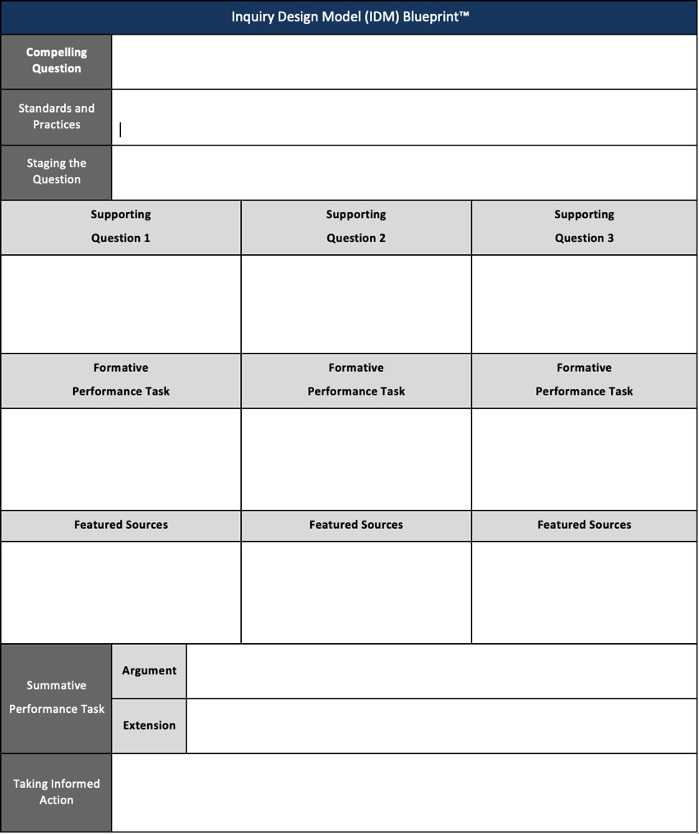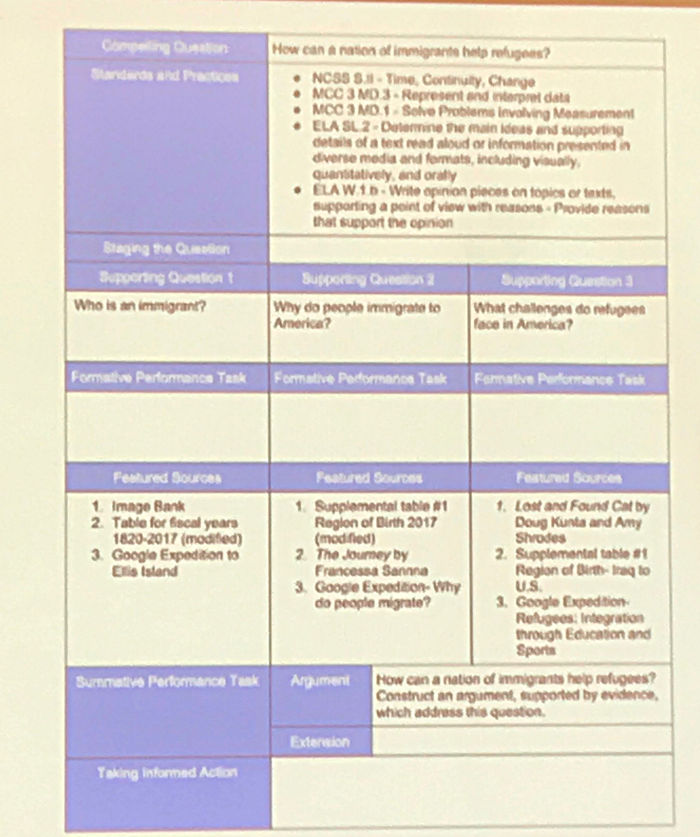Historypalooza 2019 – Inquiry Design Models for the Elementary
Designed to support NCSS’s Inquiry Arc in their C3 Framework, an IDM has basically three parts: questions, resources, and tasks.
It comes but once a year. The National Social Studies Supervisors Association and National Council for the Social Studies combined conference. For a history nerd, it’s the winter holiday break, the Final Four, and fresh out of the oven chocolate chip cookies all rolled into one event.
For three days, it’s about conversations that focus on social studies, tools, resources, evidence, and best practices. So what did I learn?
——
In the last session of Saturday morning, Brent Tozer is sharing how to use the C3 Teachers Inquiry Design Model structure to integrate more social studies into elementary level instruction.
Get more information about the IDM structure by heading over to the C3 Teachers site. Tap the Inquiries tab at the top to access a database of teacher created units using the IDM structure and template. The idea behind an IDM is to create something a little more than a lesson and little less than a unit which encourages student inquiry through the use of evidence. The end in mind? Have kids make a claim using that evidence.
Designed to support NCSS’s Inquiry Arc in their C3 Framework, an IDM has basically three parts: questions, resources, and tasks. A compelling question that drives the inquiry, supporting questions that help students organize their thinking, formative tasks that address those supporting questions and measure their ability to think historically, and resources that students use to complete the formative tasks.

The C3 Teachers site has an amazing amount of actual IDM lessons, resources, tips, and tools. But you really need to jump into the deep end of this and get the three book series:
Tech & Learning Newsletter
Tools and ideas to transform education. Sign up below.
- The Inquiry Design Model: Building Inquiries in Social Studies
- Inquiry Design Model: The Workbook
- The latest book just came out November 2019 – Blueprinting an Inquiry-Based Curriculum: Planning with the Inquiry Design Model
The books cycle through the theory and examples, actual tools to use in the workbook, and the final book focuses on tweaks to the idea based on how teachers are using IDMs. This includes four new IDM structures to help you adapt the process specifically for your situation.
Brent’s IDM focuses on ways to support learning in the third grade around the topic of immigration:

I like that more elementary people are incorporating IDMs into their instruction – especially as part of their ELA lessons. I often hear teachers and admins say that young kids can’t do inquiry or think historically. But they can and IDMs are a tool we can to support that sort of thinking with grade school students.
cross posted at glennwiebe.org
Glenn Wiebe is an education and technology consultant with 15 years' experience teaching history and social studies. He is a curriculum consultant for ESSDACK, an educational service center in Hutchinson, Kansas, blogs frequently at History Tech and maintains Social Studies Central, a repository of resources targeted at K-12 educators. Visit glennwiebe.org to learn more about his speaking and presentation on education technology, innovative instruction and social studies.
